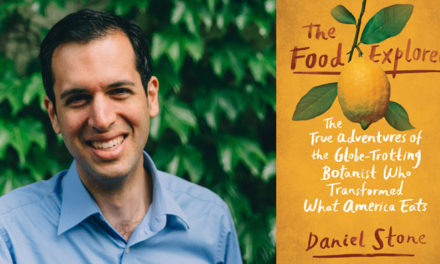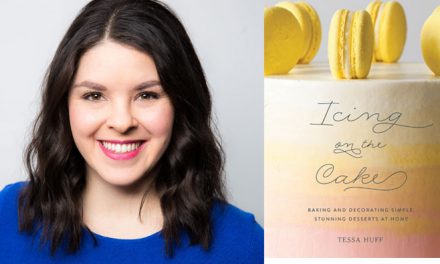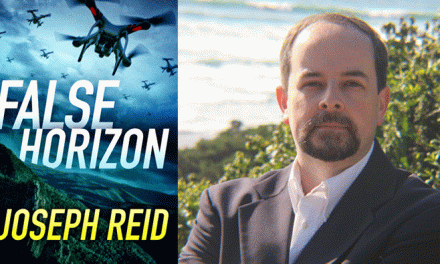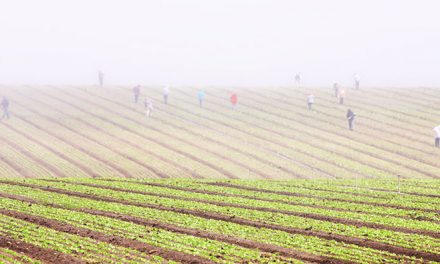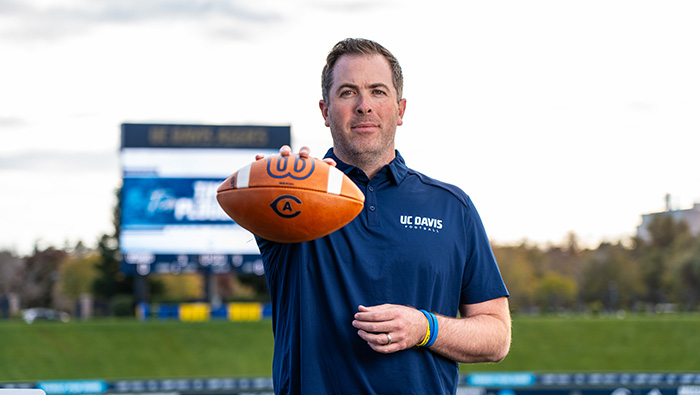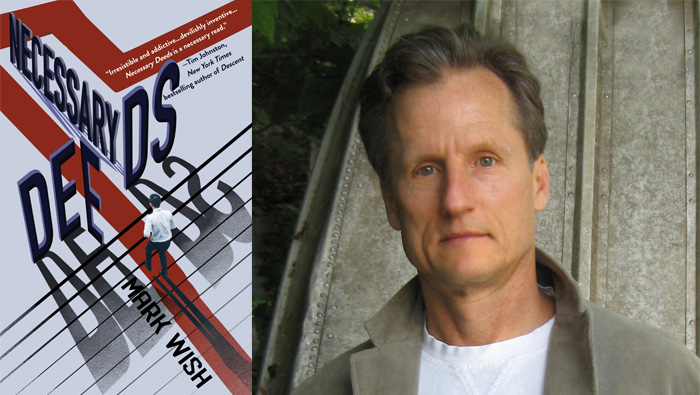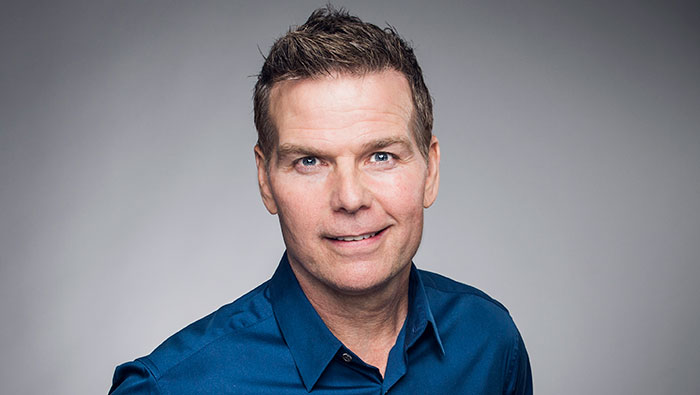
Personal Best
Bo Eason has worn many hats.
A star player for Aggie football from 1979 to 1983, Eason went on to be drafted by the Houston Oilers. After an injury, he set his sights on acting and wrote his own semi-autobiographical one-man play called Runt of the Litter. The play ran off-Broadway and toured to 50 cities. After that, he became a motivational speaker, training others on optimal communication.
This month, he unveiled his first book, There’s No Plan B for Your A-Game (St. Martin’s Press, 2019). In it, Eason explains what is necessary to be the best at any discipline. He focuses on a four-step process: declaration, preparation, acceleration and domination.
Eason heads back to UC Davis for the Big Sky Conference home game against Weber State on Oct. 26, when he will be honored as the second entry to the Aggie Pride Wall at the UC Davis Health Stadium.
“It’s really an honor. I get little tears in my eyes,” he said. “It was a defining time for me at UC Davis. You remember all those faces that helped get you on the field. It’s humbling and very cool.”
Here, Eason talks more about his experience at UC Davis and why he wanted to try his hand at being an author.
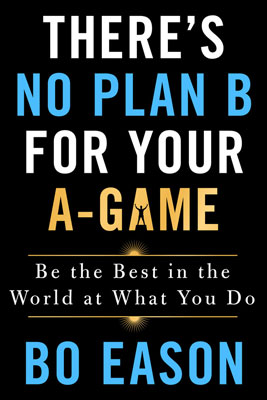
Jocelyn Anderson: You made a 20-year plan at age 9 that included becoming a pro football player. What made you so focused at such a young age?
Bo Eason: I’ve always been really focused. I must have been a strange little 9-year-old to come up with the plan to be this something that I wasn’t. People tell me I’m really good at staying locked in on what I want for many years, even when it’s looking like it’s not going to come true. When you think about trying to be a pro football player, most of my life up to about 21 it was looking like that was never going to happen. And yet I just stayed true to the dream rather than the naysayers.
JA: You talk a little about your experience at UC Davis in the first chapter. What was the UC Davis experience like for you?
BE: Just like everyone else back then, I was a walk-on. I practiced for a day, and then they sent me home. I was pretty small, I wasn’t the fastest. I was kind of immature. They said, “Come back in a month, and you can play on the freshman team.” I didn’t want to go home because I was embarrassed. I didn’t want to tell my mom and dad. So I just stayed and went back the second day as if nothing happened. Nobody said anything. They let me practice. Eventually, I got to play in a game and I succeeded at a play. And from that moment on I had a varsity uniform in my locker. I always say I went from the worst player in the history of college football to one of the best players in my position.
JA: You share other people’s stories in their own words in this book. Why did you want to include them?
BE: Because I come from an athletic background, I didn’t want people to make assumptions. They say, “He’s got it in his genes.” There’s no gene that says you’re an elite athlete. There’s no family you’re born into that says you’re a hard worker. You have to develop that and train. So we used other people’s stories. Whether it’s soccer or dance or parenting, it all takes the same principles to reach the top of those disciplines. I think someone really smart said this once: Master one thing, master all things. I think it’s absolutely true. It’s hours, deliberate practice during those hours, and determination.
JA: What do you hope people will take away from the book?
BE: I want people to know that being the best at something is not only cool, it’s a worthy cause. It’s a life well-lived. People come with you. They follow and become the best at what they do. I want people to understand they have permission to be the best. A lot of people, our culture, just frowns upon that, as if you’re being conceited or too big for your britches. I don’t see it like that at all. I see it as I want to take my life and see if I can be the best at one thing at a time. What’s wrong with that? That’s inspiring.

